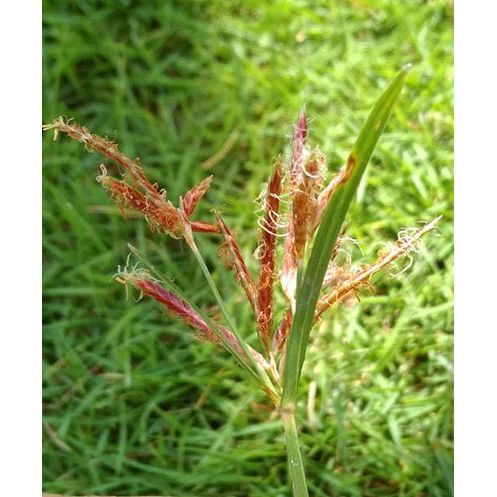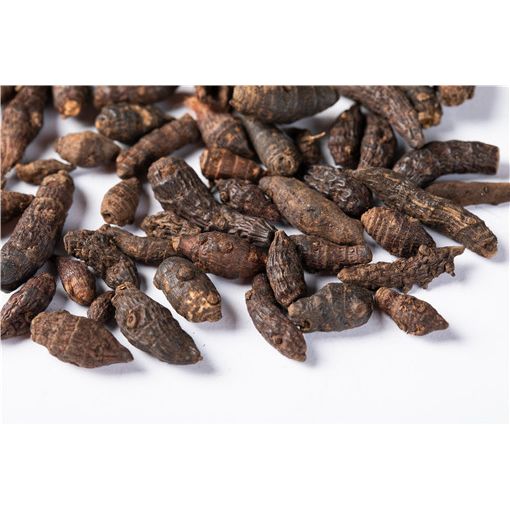Original information from Kobashi Official Website:
Nagarmotha is the Hindi name for Cyperus rotundus and Cyperus scariosus, tenacious weeds that grow in tropical, subtropical and temperate regions worldwide. A member of the sedge grass family, our Nagarmotha is sustainably harvested from West Bengal, India where it grows abundantly and vigorously. In India alone, there are over 50 species of Cyperus with many hundreds growing worldwide.
The essential oil is derived from the dried rhizome roots of Cyperus rotundus, resulting in an amber/red oil with a warm, woody and earthy, resinous aroma with a sweet spiciness. Reminiscent of myrrh, vetiver, vanilla, slight liquorice notes. Nagarmotha has a long lasting aroma which lends its self well as a fixative base in exotic blends.
In ethnobotanical use, this herb is largely associated with the abdominal system.
LATIN NAME: Cyperus rotundus/scariosus
SOURCE: Steam distilled from dried roots, sustainably wild crafted
COLOUR: Dark amber
ORIGIN: West Bengal, India
AROMA: Balsamic, warm, earthy, woody, dry spicy, slight pepper notes, with sweet creamy caramel, vanilla base reminiscent of vetiver, myrrh, slight lliqourice notes.
Other common names given to this highly invasive species include nut grass, purple nut sedge, Java grass and coco-grass. It is believed to have originated in India, having spread from there over the last 2,000 years (first appearing in a Chinese medicine literature around 500 AD).
Cyperus rotundus grows rapidly and fills the soil with its vast mass of roots and rhizomes; this one species of Cyperus can produce up to 40,000 kg/hectare of underground plant material. In addition to taking up nutrients and physical space, the plant produces sesquiterpenes that accumulate in the rhizomes, which inhibit the growth of other plants, a nuisance for crop farmers. So with this in mind, it is a particularly sustainable choice of essential oil.
Ayurvedic medicine uses:
Musta, also mustak, mustaka & tunga mustala are the names used for the rhizome in Ayurvedic medicine. A well-known herb, it is described in all the classical texts of Ayurveda, including the ancient Charaka Samhita (c. 1st century CE). Its uses in modern Ayurvedic medicine are notably for treating fevers and digestive system disorders (diarrhoea, vomiting, indigestion, gastroenteritis etc.). It is also well known for its use as an emenagogue and an analgesic for dysmenorrhea, promoting healthy regular menstruation.
In traditional Chinese medicine, C. rotundus is well considered as the primary Qi-regulating herb. In Chinese pinyin it is known as xiang fù or xiang fuzi. The term xiang means fragrant, often used to describe aromatic fragrances, such as those of culinary spices, perfumes, and incenses. This is much like the Hindi prefix of Sugandha, found in the names of various essential oils, which means fragrant. The character fu is the same as that used to describe aconite (fuzi); the term was likely used because the appearance of the Cyperus rhizomes, the part used, reminded herbalists of the aconite roots. (CYPERUS PRIMARY QI REGULATING HERB OF CHINESE MEDICINE, 2005)













